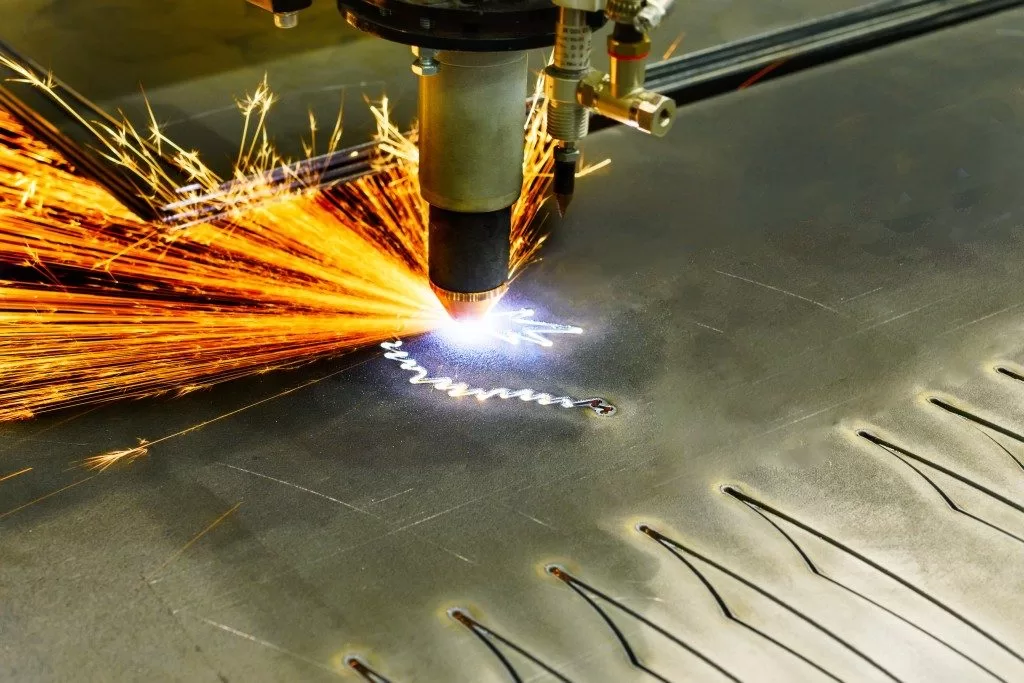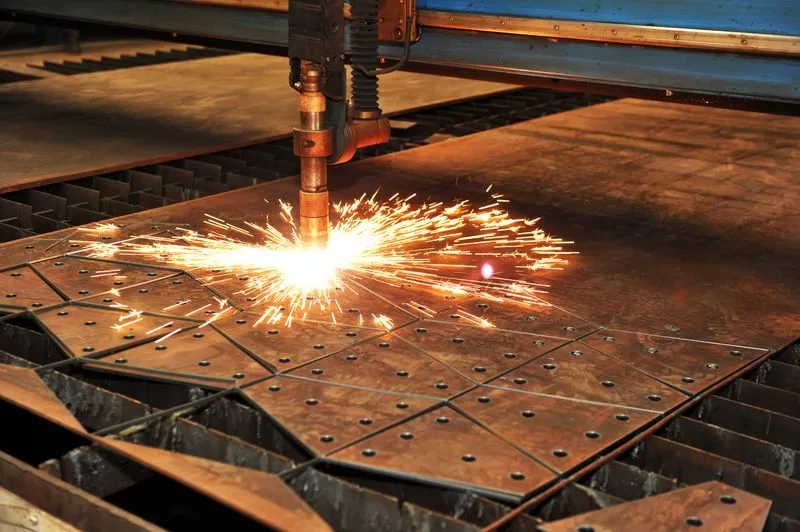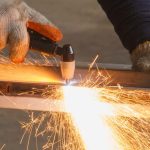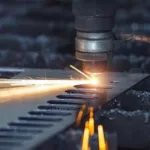It takes a lot of training and practice to learn to use a CNC plasma cutter effectively. A plasma torch is a complex tool. Using it properly requires familiarity with its various settings and controlling them, as well as understanding how to keep it running smoothly. The good news is that many resources are available for anyone who wants to learn the necessary skills.
CNC Plasma Cutter
Welding Town

What a Plasma cutter does
Plasma cutters cut numerous metal items of different thicknesses. It works on a variety of appliances. What differentiates cutters is the difference in amps. The number of amps determines the cutting performance of the plasma cutter. Fewer amps are ideal for a ¼ sheet metal. A high-speed electric current in gas form goes to the plasma cutter.
The plasma cutter attracts a high demand in the metal artwork industry. It is hot to the extent that it cuts through a material. It gives precise cuts and makes tricky shapes. It is loyal to detail, and drawn lines are from moderate heating. It is used to make art pieces and to create stencils and templates used for drawings.
Contractors and trade workers use the plasma cutter for construction, plumping, and installations. The plasma cutter makes detailed cuts. The smooth edges produced in plumbing use the plasma cutter. That allows you to join pipes flawlessly. Welding is made better and bearable, as well as car repair and farming.
Tractors need repair as well as water tanks. Plasma cutters demolish structures and recycle. It compresses the material into smaller materials, which does not take up space. That makes it an environmental tool. That makes it a versatile tool in the art, industrial, plumbing, and metalwork industries.
Understanding the CNC Plasma Cutter
A CNC plasma cutter is a machine that cuts through electronically conductive materials using a computer to control and direct plasma at the material. CNC plasma cutters cut through various brass, copper, and steel materials.
The CNC plasma cutter has systems run by a computer to move the torch in different directions using numerical coding programmed into the computer. It works in fabric and welding shops. Auto repair and restoration technicians also make use of it.
The cutter machine comes in different sizes. They are accurate and operate at a maximum speed of 500 inches per minute. They need plasma gas and assist gas to function. The type of gas depends on the material.
They use oxygen, argon, hydrogen mix, compressed air, nitrogen, and methane. It cuts through sheet metals, metal signs, tubes, and pipes. That is thick steel and high-alloy steel.
The cutting speeds are high, and that makes it fast and accurate. It also cuts underwater, and that reduces heating and noise levels. It does not cut above 160mm for dry and 120mm for underwater cutting. You cannot avoid noise when dry-cutting.
How to set up a plasma cutter
Observe the thickness of your part to see if it fits the cutter. The part file has to be compatible with the plasma cutter. As soon as you draw the part file, you have to save it on a flash drive. Ensure the computer is plugged into the plasma cutter and plug the flush onto the computer.
You are now ready to open the PlasmaCAM software to start the machine. Open the flash drive and import the part from the file to the computer. The sheet metal has to be in the right place and slide the region around the computer. As you move the part, the cutter will be ready for cutting.
When the part is in the correct position, it starts cutting. Make sure the torch has enough power and there is enough ventilation. Highlight the part and combine sketches. Convert the details to cut paths, turn the plasma cutter on, and cut. Let the part cool off so that you get rid of excess material.
How to engrave
Engraving is the cutter that carves a design into a hard surface. The plasma cutter needs an engraving tool attached. I advise you to use a high speed and low power setting to remove the top layer. The performance depends on the material. Reduce the DPI when engraving.
How to operate a plasma cutter
A guide helps you cut out material using a plasma cutter. Accuracy and safety are critical. To start building air pressure, turn on the air compressor. Ventilation is a priority. You either set up your ventilation system or open windows. Make sure there are no flammables around.
Position your part, keeping your cord off the cutter. Line up your body to the piece and ensure a clear view of the cut. Clean the cut area and draw the cut line using metal chalk. Hook the clamp to the material and plug in your plasma cutter and air hose.
Cut using a smooth motion. Flip down the plasma hood and press the switch on your torch. When the metal hits the floor, that is your cue. Let it cool down before you pick it up, and get rid of the excess material for a smooth finish.
Safety
Using the plasma cutter, use safety goggles that give UV protection from the electrical arc. They also protect you from particles flying around. Your eyes are delicate from harmful objects such as rays and fumes. I recommend goggles for maximum protection. You also have to protect yourself from noise.
Failure to do so will damage your hearing capacity. The use of earplugs reduces the amount of noise received. Heavy gloves protect you from harmful material and heat from the machine. The chances of harming yourself from the cutter are low. A helmet protects you from material that might hit back from the plasma cutter. It protects both your face and skin. It works together with a welding jacket.
A high voltage of electricity damages the skin in the long run. Gloves protect you from shock since you are using metal. A respirator gives you enough oxygen. Cutting materials results in a high volume of carbon dioxide and toxic gases harmful to your health. Proper footwear protects you from vibrations and sensitive materials underlying the ground.
The cutter generates force during operation. Protective clothing protects you from burns. There is heat created by the plasma cutter that needs protection. It is dangerous to know the danger that comes with a plasma cutter after you have experienced it. The harm might catch up with you unaware, and that is when you only know the pain.
That is why I advise caution before accidents. Avoid operating your plasma cutter in wet conditions since electric current passes through water. Flammable materials should be far to avoid sparks and open fire. Work in ventilated areas so that you do not fall short of air. Find out How does CNC plasma cutting work?











